Australia enters uncharted waters: Why South China Sea now a flashpoint
Australia could be drawn into conflict as tensions intensify over disputed waters. Here’s what could happen.
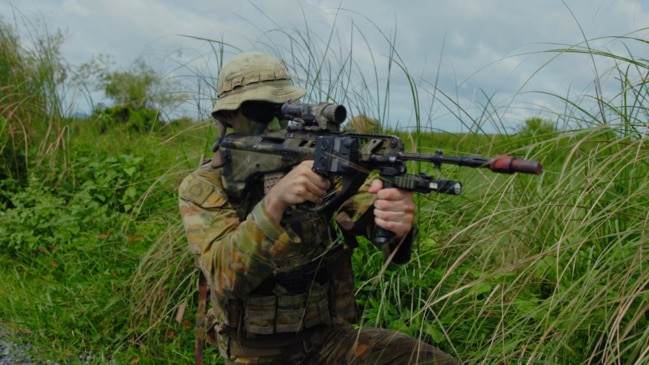
World
Don't miss out on the headlines from World. Followed categories will be added to My News.
On the detailed navigational chart on the wall outside the senior officers’ cabins on HMAS Canberra, seas about the Philippines are rightly marked in red as “dangerous ground”.
There are thousands of reefs and atolls, most of which were literally last charted by rope and lead weight by Captain James Cook on his expedition of discovery 200 years ago.
But on this map a pen note hints of another underlying threat, flagging an even more uncharted danger.
The South China Sea is already the world’s most congested and disputed body of water but on this map a coral atoll, circled in biro and identified as “2nd Thomas Shoal”, has emerged as a fresh flashpoint threat.
And an incident here has significant dire implications for regional security and particularly Australia’s social and economic stability.
The threat is expected to prompt Prime Minister Anthony Albanese next fortnight to controversially sign-off on permanent joint naval patrols for the contested waterway.
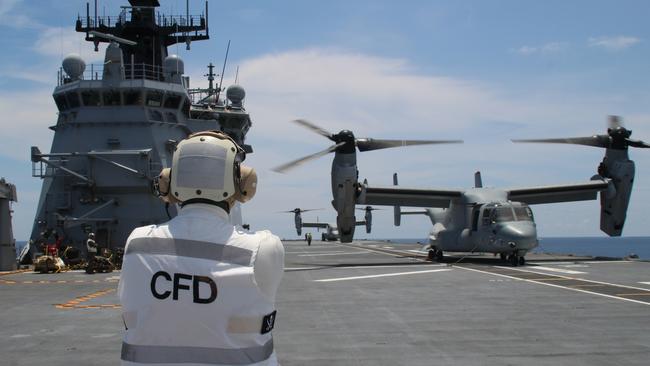
Defence Minister Richard Marles revealed it would be the RAN and the Philippines in the first instance then possibly other allies in a strategic partnership to uphold international law.
National security starts here, he said while standing on the Filipino shoreline on the South China Sea (locally referred to as West Philippine Sea).
“Our national security and national interest lies beyond our borders, it really does lie in this part of the world,” Mr Marles said.
The atoll, also known as Ayungin Shoal, is within Philippines’ Exclusive Economic Zone but China want it and it is exactly the sort of stand off the combined elements of the Australian Defence Force is addressing in the most significant step-change to its thinking for 20 years.
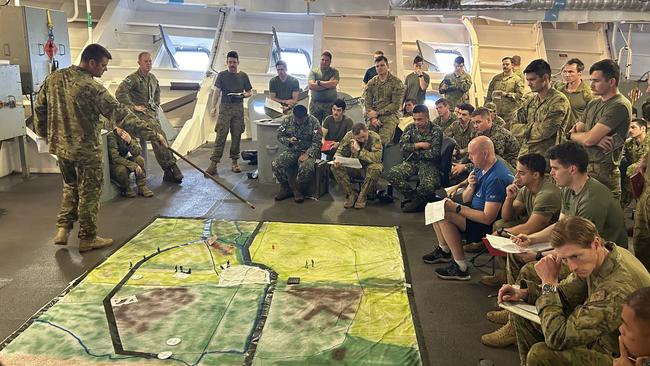
It is also why the joint military exercise by the ADF and Armed Forces of the Philippines aboard HMAS Canberra concluding this week – dubbed Exercise Alon – is not just timely but critical.
“It underscores what we do but doesn’t drive our day-to-day,” ADF Commander of Land Forces Colonel Doug Pashley said from his cabin aboard HMAS Canberra this week as it entered the South China Sea.
“We all understand the complicated context we find ourselves in these days, we also know we are a forward deployed contingency response force that have a range of capabilities that if our nation requires us to pivot to some humanitarian assistance, disaster relief crisis or something more significant, then we can do that.”
Beijing has now formally declared 90 per cent of the South China Sea as its sovereign territory, virtually to the shorelines of the Philippines, Malaysia, Brunei and Vietnam on the opposite side of the body of water.
That means, the Chinese want to control all ships and territories through which more than US$3 trillion global trade transits, including a whopping 85 per cent of all imports and exports Australia makes.
Cut this trade route off and there are dire consequences for Australia’s economy. Already Beijing’s directed fleet of distinctive blue-hulled fishing boat militia act like street corner beat cops, stationing about the sea challenging those that pass. Even Qantas flights high overhead South China Sea are hit with Chinese airspace warnings.

This is why the ADF is keen to re-establish the sort of partnership and interoperability with the Armed Forces of the Philippines; a partnership first forged when their forces fought alongside each other during the battle for Leyte in World War 2.
“It’s about operations in the littoral, so opportunities to provide a sense of security to Australia, our outer islands and more broadly the region and this is how you have to go about it,” ADF Commander of Joint Operations Lt General Greg Bilton said of Alon.
“I see it not just a change to Army but equally a change for the entire Australian Defence Force, joint operations are going to be focused here heavily.”
When asked specifically what the shift signals to China, he could not say.
“I think it is important in a rules based order where we have common views on that order that we present an image of being able to co-operate and be able to collaborate and work together and uphold security and stability. If that’s something that is interpreted from our activities then that’s appropriate.”
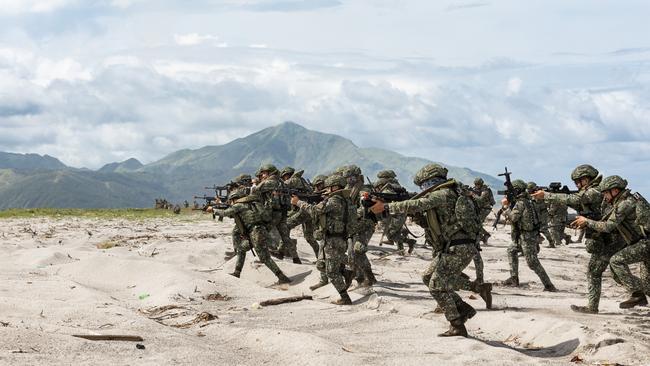
After a generation of fighting wars in the deserts of the Middle East, the ADF and the Australian Army in particular has rightly switched its focus to waterways and islands closer to home. Its about agile combined littoral Navy, Army and RAAF operations, jointly with other nations.
Commander Amphibious Task Force Captain Phillipa Hay said Australia’s trade relied on the South China Sea’s waters remaining free from coercion and that meant closer alliances with countries like the Philippines.

“Both of us have really small forces, the forces we have we have to use wisely and effectively and so they are trying to reinvigorate their amphibious capability, we are trying to continue to develop ours and make it more agile and responsive in an archipelagic region,” she said.
“As island nations we don’t have the luxury of having a land bridge, we have a maritime bridge in which our whole trade and economy is sustained upon so an isolationist viewpoint would be undesirable for Australia … we need to be able to manoeuvre through those maritime highways and keep those trade routes open and navies play a massive role, a key role to maintain those maritime accesses”
By their very nature there is always a sense of urgency and critical thinking around military exercises but Alon (meaning ‘waves’ in the Filipino Tagalog language) is unique in purpose and objective.
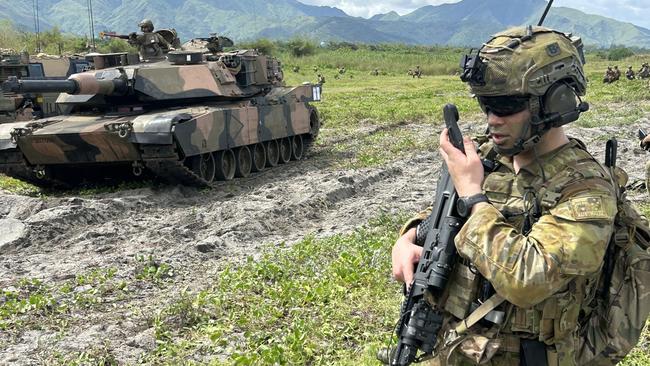
Marles’ appearance in the closing stages of Alon – which involved 1200 personnel each from Australia and the Philippines and 150 US Marines – sent a signal Australia would be prepared to stand alongside the Philippines to keep the South China Sea open.
In 1999, the Philippines deliberately grounded a World War 2 era warship, BRP Sierra Madre, on Second Thomas Shoal 200 km off the Filipino mainland, in which it now keeps a small permanent garrison of troops as part of its sovereignty claim. The move followed China’s dredging development of a number of other nearby disputed atolls in which it has built runways and ports and stationed significant forces.
This last fortnight Beijing deployed its militia boats and coast guard 1000 km from its nearest major landmass to block the resupply of that garrison by the Philippines.
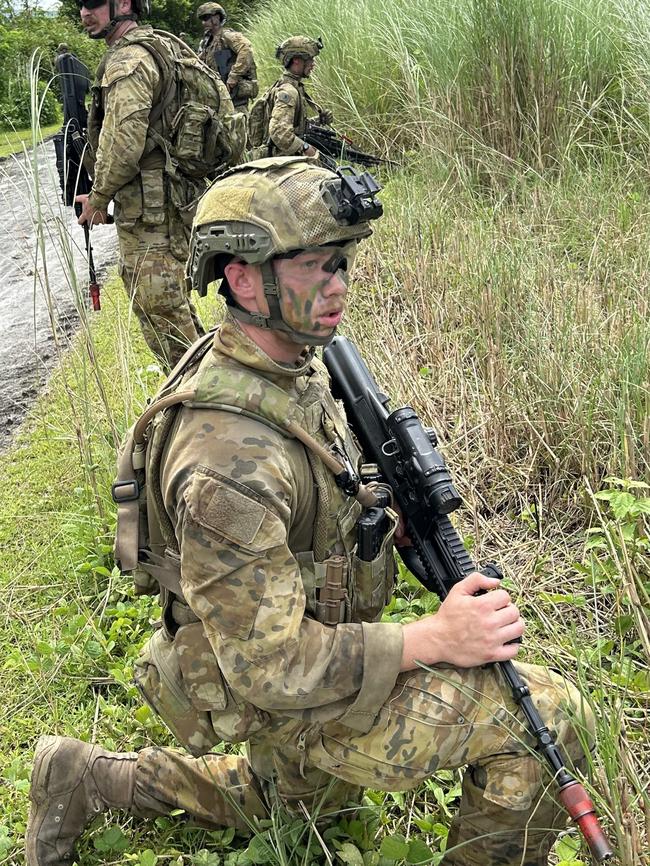
Next month Prime Minister Anthony Albanese will be the first leader in 20 years to visit the Philippines to discuss defence and security, specifically a joint naval patrol for the South China Sea. There are shared interests diplomatically and also now militarily.
“The Defence Strategic Review gave us clear direction and guidance as to what we need to be doing as a land force and we are doing that – to be a land force optimised for amphibious and littoral operations,” Col Pashley said.
“Alon’s importance is that we are partnering with allies so we can work together and show others we can work together and we are better able to respond if our nations were required to do so, because we never do anything alone.”
More Coverage
Originally published as Australia enters uncharted waters: Why South China Sea now a flashpoint




